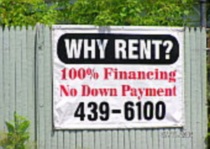Coach Mitch’s REFLECTIONS™
Give the system what it wants (Coach Mitch advice)
A banker wants to see assets. If the asset is liquid, like a stock or a bond, then he gives you credit for it. If the asset is real estate, the banker gives you credit for that also.
The banking system does not like to take chances. Why should it? You want money for some project, and the bank wants it back, plus interest and on time. To make bankers ‘feel’ better, they want to see lots of assets that you own.
Bankers like assets
Bankers equate assets with success, a good thing to have them feel about you when seeking a loan. An applicant who holds assets inspires confidence that you will be able to pay the loan back. But, most of all, the assets allow the banker to know that you have something to attach, if necessary. Your assets are collateral.
The more assets you have the better
In America, there is something magical about being a millionaire. People aspire to it and bankers love making loans to millionaires. If you had a choice, who would you rather loan to, someone who has to scrape up a down payment and can barely make a payment, or someone who has so many assets, that they are a millionaire.
Coach Mitch says, “Just say ‘Yes’. “
When seeking a loan, wouldn’t it be great to have a balance sheet showing that you have $1,000,000 in assets? Even better, wouldn’t it be great if you could really get that amount of assets on your balance sheet and only spend $1000 and show $1,000,000?
How to be a ‘paper’ millionaire
When accountants create a Statement of Assets, they list the market value of the asset. You might have purchased a house for $100K, but it may be worth $200K. You got a good deal and it is reflected on your Asset Statement. The actual cost of the item is listed somewhere else and the difference between your cost and the actual value is your equity, which is added to your Net Worth.
Bonds
This same idea happens with bonds. Bonds are purchased at a discount to their value. A $10000 bond at 10% interest for 10 years is offered for sale. The seller is motivated and the buyer offers to purchase the bond, but at a discount. The buyer wants to make 20% interest. Since the bond’s interest is contractually set at 10%, paid quarterly, the only variable that can be reduced is the face amount of the bond.
Since the buyer wants to earn 20%, the seller must sell the $10000 bond for $6836. That is the only way the equation works.
Number – Interest – Present Value – Payment
40 quarterly payments, at 2.5% per quarter (10%/y), on $10000, is $398/quarterly payment that includes principle and interest.
The above equation is the same as:
40 quarterly payments, at 5%per quarter (20%/y), on $6836, is $398/quarterly payment.
The bond payer still pays $10000 plus interest, but the new owner is collecting that interest against a payment of $6836 versus $10000, so his profit is much larger.
The Asset Statement shows an asset valued at $10000, but the cost was $6836.
Let’s Pretend
Make believe that you could buy an asset for 1000th of its value. WoW!
In many areas that sell tax liens, the liens are against property that has a high tax assessed value, but the tax lien amount is very low. This is often the case with tax liens in the deserts of New Mexico, Arizona, Utah, Idaho, Nevada, etc. Look for places where the desert land is not going to be developed for a significant period.
The Plan
Find tax delinquent lots that are tax assessed at $10000 and purchase 100 liens or lots for $10 each.
100 liens or lots @ $10 each = $1000 spent. 100 liens or lots x $10000 market value = $1 million. This amount can be added to your Statement of Assets and Balance Sheet.
Look like a million dollars
A tax lien is a bond. Bankers are very familiar with bonds. They like them. When you show that you have $1 million in collateral, they will look at you in a different light. They don’t need to know that you only paid out $1000 for that $1 million.
BTW, often, these lots can be purchased at Ridiculously low prices, because the owner no longer wants to pay the taxes. Sometimes you can get lots for FREE.
This is a creative strategy
Coach Mitch has been creating creative ideas for a long time. He shares them with his students in his “Ridiculously Simple System…” ™.
Think creatively,








Leave a Reply